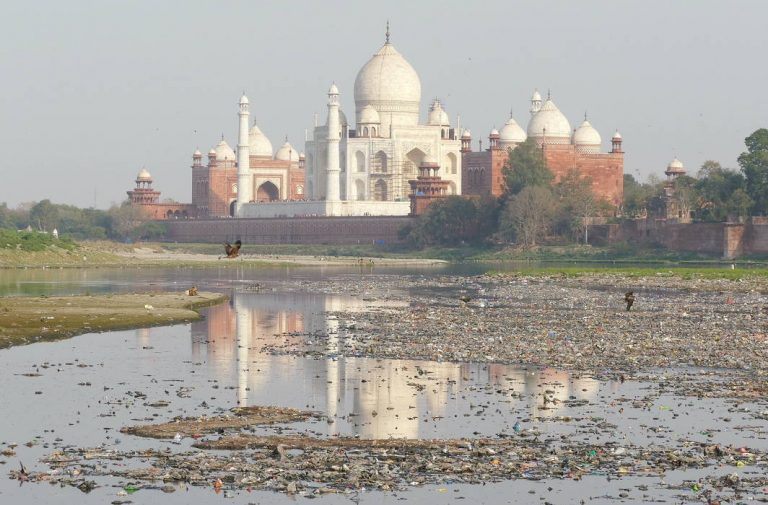
Above: UP government’s vision document mentions the need to close polluting industries around Taj
After repeated censures by the Supreme Court and the NGT, the centre has appointed people to maintain the Taj Mahal
~By Govind Raju in Lucknow
Climate change is a serious issue, with India strongly voicing concern over it at major international fora. However, not much action has been taken over it, especially in UP. When the BJP government came to power in the state, environment conservation was one of its chief priorities. But seeing the condition of its most famous monument, the Taj Mahal, one wonders if it means what it says.
The Taj Mahal has been bearing the brunt of environmental pollution for decades now, with noticeable discolouration and spots. In February, the National Green Tribunal (NGT) chided the state government, the Archaeological Society of India (ASI) and the Taj Trapezium Zone Authority for their lack of initiative and inability to do anything in the matter. Questions were raised regarding the polluting industries sprouting around the heritage site and the Yamuna and the action being taken against them, if any. The ASI then identified pests, known as goeldichironomus, as being responsible for the spots and discolourations.
On July 11, the Supreme Court pulled up the centre and state governments for not acting fast to protect the Taj Mahal. “Either we will shut down Taj Mahal or you demolish or restore it,” it said. Five days later, the centre set up a committee to address the industrial pollution affecting the monument.
Last week, the Supreme Court, irked by the lack of coordination between various agencies of the centre and the UP government, pulled up the two governments again. On July 24, the UP government filed the first draft of its vision document, detailing the protection and preservation of the Taj Mahal. It mentioned that the Taj Mahal precincts should be declared a no-plastic zone and that all polluting industries in the region be closed. The Court then criticised the UP government for not even consulting the ASI in the process of filing the first draft and questioned why it had not prepared a vision document in Hindi, as ordinary people have a right to know what the government plans to do.
And on July 30, the centre finally told the Supreme Court that the joint secretary in the ministry of environment, forest and climate change, and the commissioner of Agra Division are responsible for maintenance of the Taj Trapezium Zone.
Environmental activist DK Joshi ha earlier filed a petition in the NGT saying that the “explosive breeding” of pests in the polluted Yamuna was marring the beauty of the Taj Mahal. In an interview with the BBC, Joshi said: “Fifty-two drains are pouring waste directly into the river and just behind the monument, the Yamuna has become so stagnant that fish that earlier kept insect populations in check are dying. This allows pests to proliferate in the river.” However, the stains the bugs leave on the marble are washable and ASI workers have been trying to scrub the walls of the Taj clean. Joshi said that frequent scrubbing could take the sheen off the marble so the only solution was to clean up the polluted Yamuna.
To restore the monument’s original polish and beauty, the ASI has been applying “mud packs” on its walls to draw out the pollutants. This treatment has been done several times in the past: 1994, 2001, 2008 and 2014. This is the fate that has befallen a majority of the monuments in the care of the ASI. The Court has now expressed interest in bringing in foreign assistance if local authorities lack any clear direction.

